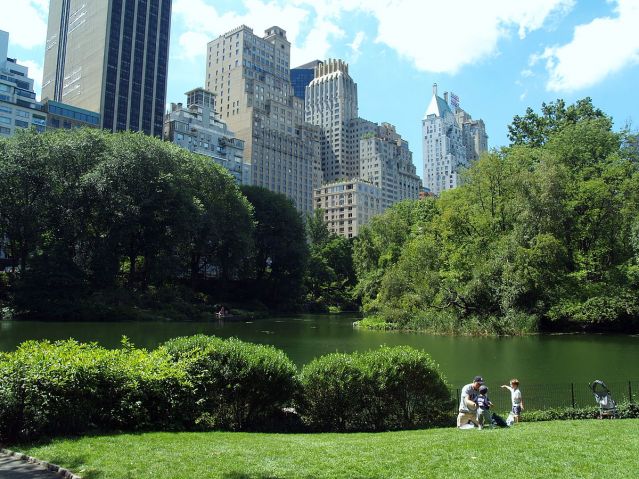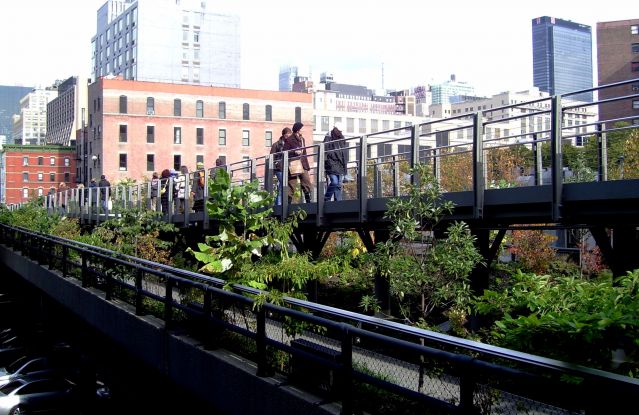Health
Large City Parks and Green Spaces Promote Well-Being
A large park combined with smaller green spaces is ideal for urban health.
Posted September 24, 2015

Do you live in an urban environment? Does your city have a large park? The majority of the world’s population currently reside in cities. In the next 35 years, it's estimated that approximately 66 percent of the global population will live in cities. The challenge for most urban planners is that our cities must grow to accommodate an influx of residents while sustaining a minimal impact on environmental ecosystems.
Urban green spaces and public parks have long been known to benefit our physical and psychological well-being. A new study confirms the importance of large city parks for accommodating our growing city populations while maintaining the health and happiness of both urban residents and ecosystems.
Recently, researchers from the University of Exeter in the U.K. and Hokkaido University in Japan collaborated to analyze nine case studies of cities around the world to identify how various urbanization patterns affect the functioning of urban ecosystems.
The September 2015 study, "Land Sparing Is Crucial for Urban Ecosystem Services," was published in the Frontiers in Ecology and Environment. The researchers conclude that high-density cities featuring large parks or nature reserves yield the most benefits. However, the researchers emphasize that smaller parks and gardens should not be sacrificed because they also play an important role in the well-being of both urbanites and a city's ecosystems.
Central Park Is "The Lung of the City"
As a native New Yorker and ultra-endurance athlete, Central Park and the tree-lined waterways surrounding the perimeter of Manhattan were my lifeblood. I did most of my training for Ironman triathlons in Central Park and the other green and "blue areas" close to water throughout Manhattan.
Training for Ironman triathlons in public parks allowed me to plug into the energy of humanity and the power of nature simultaneously. I loved living and training for athletic competitions in an urban environment with lots of parks. It was like rocket fuel.
The latest research confirms that a combination of large city parks along with random “green spaces” and smaller parks appears to be the optimal combination for the health of both city dwellers and urban ecosystems. Also, having "blue spaces" close to water is beneficial for the health, happiness, and fitness of city residents.

In a July 2015 Psychology Today blog post, "Everyday Access to Nature Promotes Well-Being As We Age," I wrote about research which found that spending time in "green" and "blue spaces" is therapeutic for psychological, physical, and spiritual well-being—especially as people gets older.
Ultimately, the distribution of green space throughout a city impacts the ecosystem and can help to maintain the well-being of the environment as well as urban dwellers. “Land sparing”, which combines dense urban areas with large parks or nature reserves, is crucial for maintaining the wide range of benefits provided by large parks and green spaces, such as improved temperature regulation, more pollination, and less air pollution.
In a press release, lead author Dr. Iain Stott, from the University of Exeter's Environment and Sustainability Institute summed up his latest findings saying:
As populations continue to grow, it's vital that we expand our cities and build new ones in a way that is most sustainable for ecosystems, and which provides the greatest benefits to urban residents.
Our research finds that compact developments that include large green spaces are essential for the delivery of ecosystem services. For humans to get the most benefit however, combining this approach with greening of built land using street trees and some small parks and gardens is the best method.
Conclusion: Policymakers Must Consider the Benefits of Large and Small Parks
Future urban development should carefully consider the importance of green and blue spaces to maximize urban ecosystems and the psychological, physical, and spirtual well-being of city residents. Senior author Professor Kevin Gaston from the University of Exeter concluded, "Future urban development must be carefully planned and policy-led, at whole-city scales, to yield the best result."
If you'd like to read more on this topic, check out my Psychology Today blog posts:
- "Why Is Air Pollution So Bad for Your Brain?"
- "Everyday Access to Nature Promotes Well-Being As We Age"
- "Where Do the Children Play in 2014?"
- "Exposure to Natural Light Improves Workplace Performance"
- "How Does Your Circadian Clock Keep Track of the Seasons?"
- "The Power of Awe: A Sense of Wonder Promotes Loving-Kindness"
- "One More Reason to Unplug Your Television"
© 2015 Christopher Bergland. All rights reserved.
Follow me on Twitter @ckbergland for updates on The Athlete's Way blog posts.
The Athlete’s Way ® is a registered trademark of Christopher Bergland.




